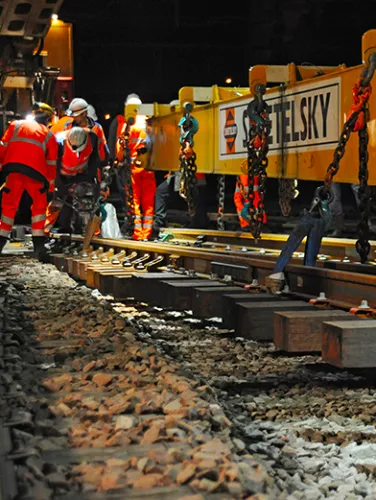Our approach to works
Responsible, to limit their impact
Most of our works are carried out at night or at weekends to avoid disrupting services. We take care to limit noise pollution, preserve biodiversity and reuse materials as part of a circular economy approach.
Efficient, to boost performance
Launched in 2020, the works information system aims to guarantee the safety and increase the performance of our interventions by relying on digitisation. This project was rolled out in 2022 in the Île-de-France region to meet the challenges of the 2024 Paris Olympic and Paralympic Games and Greater Paris. It will then be extended to the regions.

